Case Studies.
Add Case Study
Our Case Study database tracks 22,657 case studies in the global enterprise technology ecosystem.
Filters allow you to explore case studies quickly and efficiently.
Download Excel
Filters
-
(6,653)
- (2,601)
- (2,127)
- (945)
- View all
-
(5,642)
- (2,469)
- (1,692)
- (826)
- View all
-
(5,571)
- (2,178)
- (1,766)
- (643)
- View all
-
(5,247)
- (2,179)
- (1,715)
- (1,321)
- View all
-
(2,881)
- (1,448)
- (574)
- (376)
- View all
- View all 15 Technologies
- (1,985)
- (1,985)
- (1,915)
- (1,679)
- (1,629)
- View all 42 Industries
- (8,728)
- (4,742)
- (3,618)
- (3,233)
- (2,947)
- View all 13 Functional Areas
- (3,304)
- (2,787)
- (2,603)
- (2,006)
- (1,630)
- View all 129 Use Cases
- (13,581)
- (5,296)
- (4,272)
- (3,520)
- (2,856)
- View all 9 Services
- (504)
- (432)
- (416)
- (382)
- (301)
- View all 1083 Suppliers
Selected Filters
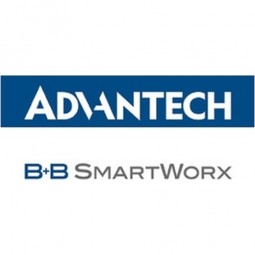
|
Condition Based Monitoring for Industrial Systems
A large construction aggregate plant operates 10 high horsepower Secondary Crusher Drive Motors and associated conveyor belts, producing 600 tons of product per hour. All heavy equipment requires maintenance, but the aggregate producer’s costs were greatly magnified any time that the necessary maintenance was unplanned and unscheduled. The product must be supplied to the customers on a tight time schedule to fulfill contracts, avoid penalties, and prevent the loss of future business. Furthermore, a sudden failure in one of the drive motors would cause rock to pile up in unwanted locations, extending the downtime and increasing the costs.Clearly, preventative maintenance was preferable to unexpected failures. So, twice each year, the company brought in an outside vendor to attach sensors to the motors, do vibration studies, measure bearing temperatures and attempt to assess the health of the motors. But that wasn’t enough. Unexpected breakdowns continued to occur. The aggregate producer decided to upgrade to a Condition Based Monitoring (CBM) sensor system that could continually monitor the motors in real time, apply data analytics to detect changes in motor behavior before they developed into major problems, and alert maintenance staff via email or text, anywhere they happened to be.A wired sensor network would have been cost prohibitive. An aggregate plant has numerous heavy vehicles moving around, so any cabling would have to be protected. But the plant covers 400 acres, and the cable would have to be trenched to numerous locations. Cable wasn’t going to work. The aggregate producer needed a wireless solution.
|
|
|
---nasdaq--amzn_14.jpg)
|
Vodafone Hosted On AWS
Vodafone found that traffic for the applications peak during the four-month period when the international cricket season is at its height in Australia. During the 2011/2012 cricket season, 700,000 consumers downloaded the Cricket Live Australia application. Vodafone needed to be able to meet customer demand, but didn’t want to invest in additional resources that would be underutilized during cricket’s off-season.
|
|
|

|
Driving Digital Transformation: Mazak Corporation
Mazak required a common, standards-based method to securely connect and derive value from the rich, raw data in its machine tools. An advanced security system suitable for IT and operations technology (OT) was necessary to protect from both internal and external attackers. The application needed to run on the network infrastructure on the factory floor, immediately transforming process, overall equipment effectiveness (OEE), and sensor data. The fog application needed to support the MTConnect specification for integration with existing systems and sensors. Real-time analytics were required to process high frequency vibration, temperature, coolant, and sound inputs to inform operator action and drive business support systems.
|
|
|
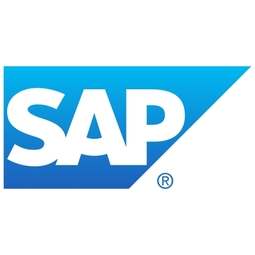
|
The Data Tsunami for AGL Energy
AGL Energy, one of Australia’s largest power retailers, is replacing its electromechanical meters with interactive smart meters in 2.2 million homes and 300,000 businesses throughout the state of Victoria, including its capital, Melbourne. This is nearly a 4,320-fold increase in daily data processing for electricity providers. It’s also the start of a “data tsunami,” swelling up from these 2.5 million smart meters and flowing into AGL Energy’s billing and operations systems.AGL’s Business Requirements- For wholesale energy: Improved settlement reporting- For merchant energy portfolio management: Better load forecasting, accuracy and data analytics / segmentation with better reporting- For analytics: Better forecasting and reporting
|
|
|
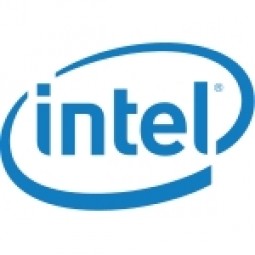
|
A Smarter Brain for Your Train…
Have you ever felt overloaded by too much sensory input? The results can be problematic, even risky if you’re driving at the time. The same holds true for trains, ships, oil rigs, and many other industrial assets. The data processing challenges on these complex machines are growing rapidly as the number of sensors increases; yet so are the opportunities to transform operations by using all the available data effectively. A modern locomotive, for example, has as many as 200 sensors generating more than a billion data points per second.
|
|
|
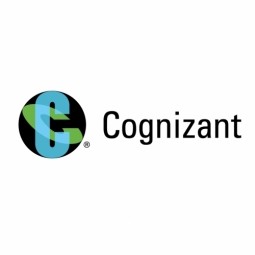
|
End-to-End PLM Implementation and Upgrade
The client wanted to implement a robust PLM Solutions using Enovia Matrixone. The client also wanted to integrate its PLM Application with other applications like Engineering Design Tools, third party applications and enterprise-wide ERP tools.
|
|
|
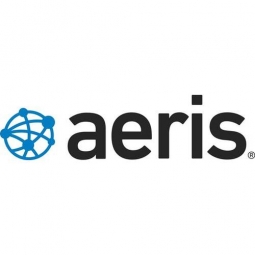
|
In-Car Cleverness Provides Innovative 'End-To-End' Telemetry Solutions
In-car Cleverness provides vehicle telemetry services for fleet management, car rental companies and prestige Dealership Groups. It delivers an innovative ‘end to end’ solution that enables these companies to enhance customer engagement and improve profitability by continually analyzing data from the car. This data can then provide a range of different solutions depending on the customers’ needs. For instance, In-car Cleverness can offer insights into a person’s driving habits and this information can be used to help manage fuel consumption and lower the impact of wear and tear. Alternatively, it can send an alert as soon as a person is involved in a crash. It can also be used to rapidly send data to rental operators or other commercial fleets following a crash, enabling the pinpointing of probable cause and extent of any damage. The company aims to offer its customers, which are made up of businesses in the UK, Ireland, and the rest of Europe, a reliable solution that provides seamless feedback, full visibility and consistent coverage, no matter where in the world the cars are being driven. Telematics has evolved. In-car Cleverness realizes that the focus is now on understanding what the car can tell you. It has pushed beyond simple tracking and fuel consumption data offered by most telematics providers, and can accurately, cost-effectively and remotely extract and present data from the engine management systems of a vehicle in an intuitive format. It can then process and analyze that data to deliver tangible operational and, more importantly, financial benefits to its customers. In-car Cleverness’ solutions continue to expand around the world, demanding a flexible and reliable data network solution for customers, wherever they might be, and whatever systems they might use. It requires a reliable global mobile network that provides consistent connectivity worldwide, without the burden of costly roaming charges.
|
|
|
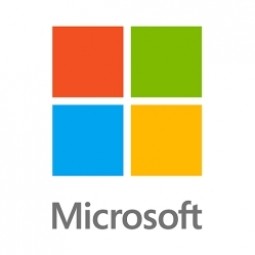
|
GE Healthcare Delivers Core Customer Solutions on the Microsoft Cloud
Two of the company’s businesses—GE Healthcare IT and GE Healthcare Global Services—sought to provide customers with more flexible, yet secure cloud solutions. GE Healthcare IT software and services for Integrated Care create actionable insight across the healthcare system and the care pathway, enabling better clinical and financial outcomes. Healthcare Global Services help health systems manage their operational resources to deliver high quality care safely, efficiently, and affordably. Both business groups knew that while healthcare providers worldwide need better insight and control over data to both improve efficiency and improve clinical care, they must also protect patient information and meet increasingly challenging regulatory requirements Moreover, the company sought to meet its goals without investing additional time and money in on-premises infrastructure.In the United States, GE Healthcare sought to simplify Meaningful Use (MU) reporting to help facilitate the MU attestation required to qualify for incentives from programs established through the Health Information Technology for Economic and Clinical Health Act (HITECH Act). Customers in other countries also have compliance needs, and GE Healthcare wanted a solution that it could easily adapt to a wide range of privacy and security requirements.
|
|
|
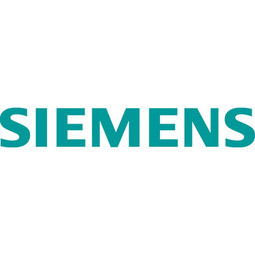
|
SpaceX delivers outer space at bargain rates
Space X wanted to develop a rocket that can reduce the cost of space access by a factor of 10.
|
|
|
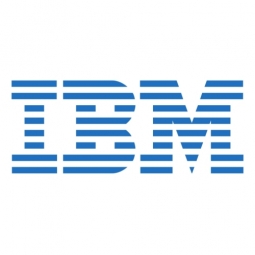
|
Carfinder: Real-time Vehicle Tracking for AUDI
A growing range of models and ever-shorter development cycles increase the demands on the manufacturing process. As a result, tracking vehicles inside and outside manufacturing facilities is essential for delay-free quality assurance and to provide transparency throughout all manufacturing steps in the automotive industry.
|
|
|
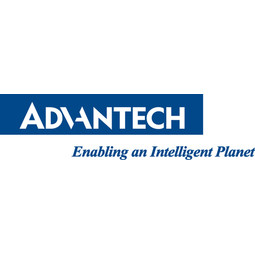
|
Controlling and Monitoring Tobacco Plants in China
Without the aid of computers, calculating production volume in a tobacco plant is troublesome and error-prone. PC-based monitoring systems that automatically collect production data and keep records can greatly improve in-factory logistics management and machinery maintenance. Combined with the use of networking communications, a Manufacture Executive System (MES) can be developed to improve the overall management of the factory. Our customer is a branded tobacco producer in China. When they came to Advantech, their production lines were already automated with the deployment of Programmable Logic Controllers (PLCs). However, they were still dependent on manual labor to count the amount of cigarettes and other materials, and their engineers had to manually check and record the data-logs stored in the PLCs to produce analyses for repair and maintenance purposes. But with Advantech’s PC-based monitoring machines, installed next to manufacturing machines, related data is shown on touch screens and transmitted to the control center, helping to reduce errors and improve management efficiency.
|
|
|
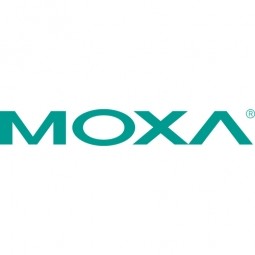
|
Boiler Control System for Plastic Manufacturing Applications
Factory automation applications must be equipped to handle and monitor the myriads of information from attached devices. For plastic manufacturing applications, the boiler control system plays a critical role by gathering and regulating information to ensure production is accurate and smooth. In this particular case, the customer combines eight subsystems that include power meters, water meters, alarm output, displays, and I/O status to be controlled by several intelligent controllers with Modbus RTU interface. The Modbus TCP protocol is used for this application due to the distance. System Requirements: • Modbus serial to Modbus TCP translation • Multiple slaves/masters support • Automatic Modbus TCP response time detection
|
|
|

|
Artificial Intelligence, Machine Learning, and Deep Learning | Dell EMC
Are you facing any of these challenges?“We haven’t been able to take full advantage of our data.”Data is growing at an astronomical rate and it’s impossible to take full advantage of it manually to get insights to win. Automation can help provide faster, better and deeper data insights. Dell EMC Ready Solutions for AI, Machine and Deep Learning can provide the processing power required for the vast number of calculations that need to be made very quickly — for facial recognition, for example. With the speed of automated image and pattern detection, these solutions can help provide better data insights. And with historical data sets, you can get deeper insights into, for example, buying behavior.“We can’t afford to run machine and deep learning in the cloud.”Some public cloud providers charge to get data out, and that can get expensive quickly with the large datasets required for deeper insights such as image recognition and fraud detection . Dell EMC Ready Solutions for AI, Machine and Deep Learning can reduce costs associated with moving significant amounts of data in and out of the cloud while minimizing risks .“We don’t have the in-house expertise.”AI and related computing paradigms are emerging quickly and not many organizations have had the time or resources to develop the skills required to design, deploy and manage advanced machine and deep learning solutions . The Dell EMC HPC Innovation Lab team stays on the cutting edge of AI, testing new technologies, and tuning algorithms and applications to help you keep pace with the constantly evolving landscape . This team of industry and technology experts can help you achieve faster time to results by shortening both design cycle and configuration time . These experts can work with you to create a solution with the right features, at the right price . You can even take a test drive with the HPC Innovation Lab with a proof of concept, in one of the Customer Solution Centers, or in one of Dell EMC’s worldwide HPC Innovation Centers .
|
|
|
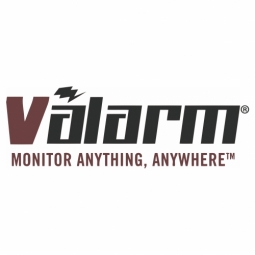
|
Remotely Monitor Pollution & Gases with Alphasense Industrial IoT Sensors
To implement air quality monitoring of Ozone / O3, VOCs, Nitrogen Oxides / NO2, Dust Particulates, PM1, PM2.5, PM10.
|
|
|
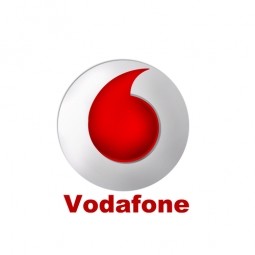
|
Ecolibrium Energy Helps Reduce India's Energy Wastage
Ecolibrium’s SmartSense solution connects sensors to energy infrastructure within a factory. It then sends energy consumption data, temperature and environmental data to a central platform. This data can be sent each minute, providing a near real-time view of energy consumption and analytics on where problems occur, what they are and recommendations on how to fix them. To work, each device needs robust connectivity that is simple to manage and consistent in pricing.
|
|
|
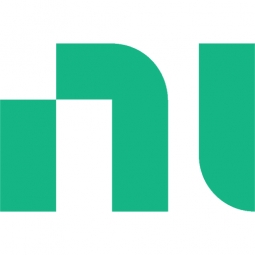
|
Controlling and Monitoring Microgrids
Microgrid topologies offer several advantages over large traditional grids including increased resiliency and easier integration of distributed renewables. However, some challenges such as maintaining scalability and interoperability between diffferent vendors and connectivity protocol standards are challenges that have to be overcome in order to reap the benefits of such a system.
|
|
|
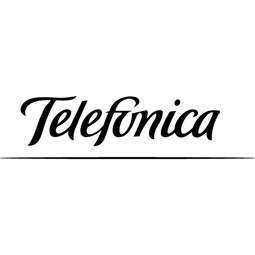
|
Telefonica Smart Metering
The UK Government is requiring energy companies to install 53 million gas and electricity meters at 30 million domestic and smaller non-domestic properties by 2020.Under the UK Government's Smart Metering Implementation Programme (SMIP), there was a need for a Communications Service Provider (CSP) to provide connectivity services and communication hubs to energy suppliers. Telefonica was chosn to be this CSP.
|
|
|

|
Intelligent and Active Gas Detection System for Semiconductor Manufacturing
As one of the world's largest semiconductor manufacturers, our customer needs to continually refine and expand their manufacturing capabilities to meet the constant, ever-growing demand for electronics products. Semiconductor fabrication requires minute nanometer-scale operations using dangerous chemicals and gases. To continue growing their manufacturing capabilities while maintaining high levels of precision, the manufacturer expanded operations with a new plant which was to incorporate new gas detection alarm technology. System Requirements • Real-time alerts of abnormal gas levels on the supervisory control and data acquisition (SCADA) system • Local alarms with local control logic to alert personnel of high gas levels • Mixed analog and digital I/O solution for broader device compatibility • High reliability
|
|
|

|
Energy accountability brings LEED Platinum certification
Earth Rangers was looking for partners who could donate equipment and expertise. After earning LEED (Leadership in Energy and Environmental Design) Gold for New Construction certification, Earth Rangers decided to further demonstrate their commitment to reducing energy use and CO2 emissions by pursuing a LEED Platinum for Existing Buildings certification—the highest level of certification offered under LEED.
|
|
|
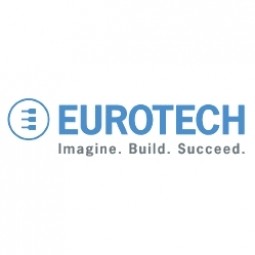
|
Transport of the Future at Heathrow
Ultra Global was developing a ULTra Personal Rapid Transit (PRT) system for Heathrow airport. A single board embedded computer which can provide the performance, reliability and scalability to handle PRT system's communication and security requirements is needed.
|
|
|
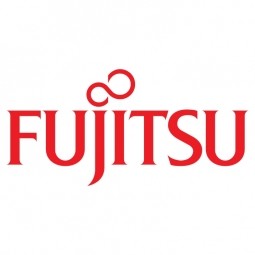
|
Toyota Motor Manufacturing Indonesia
Improve new system developments and existing system adjustments lead-time in order for the business to achieve maximum benefits as soon as possible, thus providing a competitive edge for Toyota against competitors. TMMIN IT environment was built on a complex of systems added up complexity in each development or adjustment project.
|
|
|

|
Remote Monitoring and Controlling of Greenhouses
For people who live and work in big cities, growing their own fruits and vegetables is a dream which is often difficult to realize. But how about renting a greenhouse, and being able to remotely plant seeds, spray water and apply fertilizers through a webpage, and then watching how your crops are growing via streaming video from an IP camera while you occasionally pay a physical visit to your plants at the weekends or holidays to harvest and cook your vegetables at a feast? A group of young Taiwanese entrepreneurs are making their own, and other people’s dreams come true by establishing greenhouse plots for rent. Leveraging the latest Advantech technologies and features provided by the ADAM-6200 series Ethernet I/O series and WebAccess 8.0 HMI/SCADA software, they’ve created a greenhouse automation and remote monitoring solution from which their customers can control and monitor the environment via a virtual dashboard on a computer, smartphone or other web-based device in real time.
|
|
|

|
IIC Smart Manufacturing Connectivity for Brown-field Sensors
The discrete manufacturing domain is characterized by a strictly hierarchical structure of the automation systems, commonly referred to as the automation pyramid. Data acquired by a sensor typically flows through an IO-module into a Programmable Logic Controller (PLC) which manages the local real-time control system. As all process data are concentrated in the PLC, re-programming the PLC and thus, implementing interfaces to access these data appear to be the natural choice to transfer them to the IT system. However, for brownfield installations this choice has proven impracticable for the following two reasons:In brownfield facilities, PLC usually operate within a once-specified environment and are rarely re-programmed. That is why the active staff is often not familiar with the code and lacks of the competence to modify the existing implementation in a reasonable amount of time.Furthermore, for cost reasons, any PLC was selected to exactly match the requirements of the environment within which it was intended to operate. That is why it cannot be assumed that a PLC will be able to support additional tasks such as communicating data through additional interfaces.
|
|
|
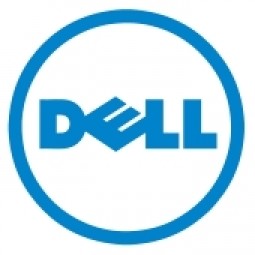
|
A repeatable model for industrial data intelligence
Exara’s oil and gas client required a reliable way to gather, store, and process data from sophisticated machine assets in remote oil field sites. These harsh, real world environments present significant challenges for high performance computing devices.
|
|
|

|
ThyssenKrupp employs Visual Rules BRM
ThyssenKrupp Steel Europe found itself in the position of needing to replace, step by step, the models it had programmed itself to manage the production of various grades of steel with a solution equipped to face the demands of the future. The solution had to be easy to integrate and designed to be rolled out step by step. ThyssenKrupp Steel Europe uses its automation systems to manage the whole production process at its company steel plants. This is done using clever algorithms that map the functional relationships across all stages of the steel production process. However, there are still a host of other changeable factors that influence the quality of the product obtained, and these also need to be factored in in the form of rules or formulae. What ThyssenKrupp Steel Europe was looking for was a suitable piece of software to fulfill this rule-based management function.
|
|
|
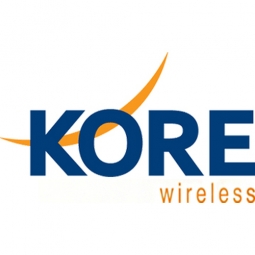
|
Wireless GPS Tracking & Security Monitoring
Enhancing the security of hazardous freight and ensuring compliance with Homeland Security’s Transportation Security Administration mandate that all trains carrying chemicals capable of creating a toxic inhalation condition are equipped with on-board safety monitoring systems.
|
|
|

|
Fresh Solutions for Fresh Produce
Dole processes 48,000 purchase orders each year from farmers across several countries and regions. In order to shorten the PO process, Dole needed to centralize all data and standardize and automate the tools, information, and practices used to manage procurement processes across the region, to save precious time and money. The company looked to SAP to streamline the entire procure-to-pay process.
|
|
|

|
Stepping up Production While Keeping Costs Down with Smarter Maintenance
To achieve its goal of doubling production capacity while keeping tight control of costs, major shoe manufacturer PT Chang Shin Indonesia set out to unlock greater efficiencies in its operations.
|
|
|
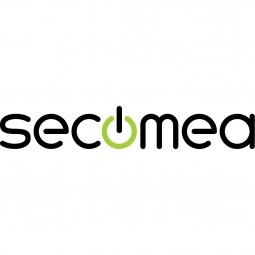
|
Ensures Cold Milk in Your Supermarket
As of 2014, AK-Centralen has over 1,500 Danish supermarkets equipped, and utilizes 16 operators, and is open 24 hours a day, 365 days a year. AK-Centralen needed the ability to monitor the cooling alarms from around the country, 24 hours a day, 365 days a year. Each and every time the door to a milk cooler or a freezer does not close properly, an alarm goes off on a computer screen in a control building in southwestern Odense. This type of alarm will go off approximately 140,000 times per year, equating to roughly 400 alarms in a 24-hour period. Should an alarm go off, then there is only a limited amount of time to act before dairy products or frozen pizza must be disposed of, and this type of waste can quickly start to cost a supermarket a great deal of money.
|
|
|
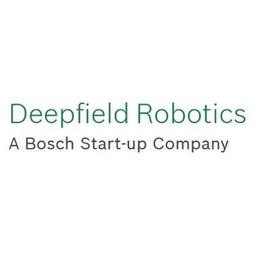
|
Work with Asparagus Farmers on IoT Solution
The quality of asparagus depends heavily on the temperature of the ground in which it’s grown. To control the temperature, farmers use a two-sided sheet of foil: the black side draws in sunlight to increase the heat of the asparagus bed, and the white side reflects light to cool the bed down. In order to make the right “black or white” decision, the farmer needs to measure the temperature of every field at least once each evening.
|
|




